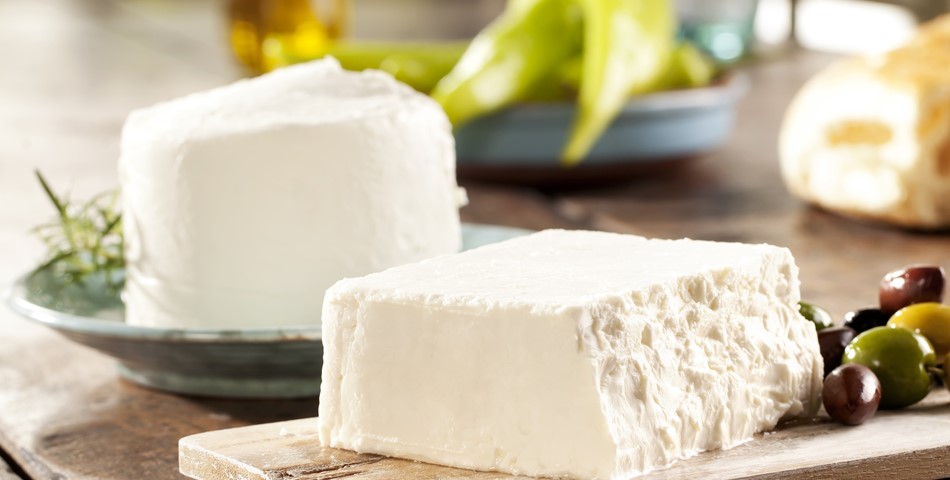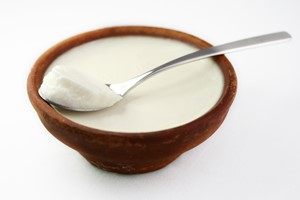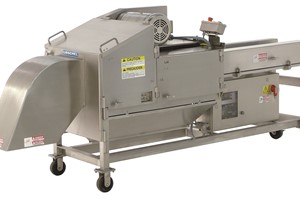White cheese a winner in the race to satisfy consumers?
Having insights on the attitudes of consumers towards healthy eating can play a major part on product development within the dairy industry. For example, millennials - a target consumer group for many dairy producers wanting to ride the health trend wave - offer new market opportunities with their different expectations from food. In a recent report from Euromonitor, millennials place a great premium on health. Unlike previous consumer perceptions of what constitutes as healthy food, such as 'low fat' options, they understand healthy food as being natural, clean-label and high in protein. They also welcome new and exciting flavor profiles and formats. White cheese - a term which encompasses white brine curd cheeses, such as Feta - can tick a lot of boxes for millennials, or indeed any health conscious consumer, if produced well. It is high in protein and a natural, healthy product, which combines well with foods like salads and can be easily used in small portions as a table cheese. Commonly produced in Eastern Europe, the Balkan countries, Germany, Scandinavia, Russia and Turkey, there are many local varieties of white cheese of which feta in particular has achieved global appeal. The taste of this cheese varies from authentic to mild and fresh and its structure can vary from compact and creamy to crumbled. This variety creates huge opportunities for cheese producers to develop a product that can meet health trends for different target groups and that will catch the eye of today's health focused and busy consumer. White cheese also offers a meat-free solution to those seeking vegetarian alternatives, due to its high protein content. This is also an important market opportunity, as there are growing trends towards vegetarian food options. For example, according to Innova, 49 percent of Germans are interested in dairy as an alternative for meat.
A growing market


World cheese production has steadily risen since 2000 and is expected to continue to grow until 2020. Cheese continues to benefit from high household penetration due to its relative affordability, versatility, and variety of flavors and formats. White cheese represents 11 percent of the global cheese market. Due to its attractive features, white cheese popularity is growing in the cheese market. In Western Europe, white cheese is currently being produced at 474,000 tons, while in Middle East and Africa, it is at 1,170,000 tons. In Eastern Europe, the figure sits at 610,000 tons. White cheese production is increasing 3 percent to 5 percent per year. In addition, launches grew between 2013-2014 by 31 percent - especially in North America (94 percent) and in Europe (22 percent) - both growth areas for the white cheese market. There is now a proliferation of different types of white cheese being introduced. Mintel research shows launch examples of white cheese products now available in the market, from traditional feta and convenient feta cubes, to spreads and also as an ingredient in vegetarian meals.
The main challenges for producers
In the production of white cheese, the flavor and the texture of the cheese to meet consumer demands are of utmost importance. White cheese producers can face a number of production challenges. For example, ensuring good taste without bitterness, a good texture for each variation, such as creamy or crumbled white cheese, as well as different flavor profiles - from mild to picante. Also, these challenges differ per production method as there are three types of white cheese categories: classic; blend and ultra-filtrated (UF) and combinations of these production methods. In all cases, it is key that the applied cultures acidify fast (a short lag-phase) to avoid growth of cross contamination during production without causing any (bitter) off flavor.


A total solution to stay ahead of the curve
White cheese producers need a solution to overcome their challenges and meet consumers' taste expectations for white cheese, such as a mild, fresh and clean taste or a picante profile. Producers must also factor in consumers' eating habits and develop white cheese that can be used in a variety of ways - as a snack, in a salad or in cooking. Feta, for example, should be suitable for different prepared meals including hot meals. Therefore, ingredients used in the production of feta should fit all kinds of feta types.
Conclusion
Cheese producers have a real opportunity to make the most of the growing popularity of cheese, and more specifically the ever more popular white cheese, in today's increasingly health-focused society. White cheese in particular can meet consumer demand for a healthy and high-protein, convenient snack, that can be consumed on the go. With a number of new product launches trying to steal the limelight, cheese producers need to optimize their cheese production processes to ensure they can create a white cheese product that meets consumer expectations and that can help them stay ahead of their competitors. Key consumer trends in white cheese segments drive DSM's business and innovations. DSM's white cheese solution enables the production of healthier, better-tasting cheese developed in the most efficient, affordable way with an extended shelf-life. With over 100 years' experience in cultures and coagulants, DSM offers one of the broadest portfolios of dairy solutions, enabling better food for everyone. The total solution can be optimized according to customers' needs and desired taste or functionality.














